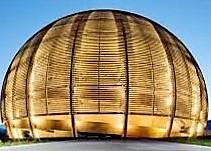Speaker
Description
A recent sensitivity study has shown that the 35K(p,γ)36Ca reaction is one of the ten (p,γ) reaction rates that could significantly impact the shape of the calculated X-ray burst light curve [1]. Its reaction rate used up to now in type I X-ray burst calculations was estimated using an old measurement for the mass of 36Ca and theoretical predictions for the partial decay widths of the first 2+ resonance with arbitrary uncertainties [2]. In this work, we propose to reinvestigate the 35K(p, γ)36Ca reaction rate, as well as related uncertainties, by determining the energies and decay branching ratios of 36Ca levels, within the Gamow window of X-ray burst, in the 0.5 to 2 GK temperature range.
These properties were studied by means of the one neutron pick-up transfer reaction 37Ca(p,d)36Ca in inverse kinematics using a radioactive beam of 37Ca at 48 MeV/nucleon. The experiment was performed at the GANIL facility using the liquid Hydrogen target CRYPTA, the MUST2 charged particle detector array for the detection of the light charged particles and a zero degree detection system for the outgoing heavy recoil nuclei.
The atomic mass of 36Ca is confirmed and new resonances have been proposed together with their proton decay branching ratios. This spectroscopic information, used in combination with very recent theoretical predictions for the γ-decay width, were used to calculate the 35K(p,γ)36Ca reaction rate. The recommended rate of the present work was obtain within a uncertainty factor of 2 at 1 sigma. This is consistent, with the previous estimate in the X-ray burst temperature range. A large increase of the reaction rate was found at higher temperatures due to two newly discovered resonances. The 35K(p, γ) 36Ca thermonuclear reaction rate is now well constrained by the present work in a broad range of temperatures covering those relevant to type I X-ray bursts [3]. In this oral presentation, these results will be presented as well as the experimental method.
[1] R.H. Cyburt et al., The Astrophysical Journal 830, 55 (2016)
[2] C. Iliadis et al., Nuclear Physics A 841, 31 (2010)
[3] L. Lalanne et al., Phys. Rev. C 103, 055809 (2021)
